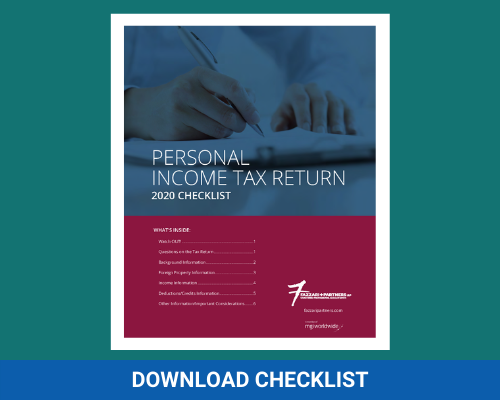The 65-Day Rule: Post Year-End Tax Planning for Estates and Certain Trusts
February 4, 2021
Fiduciaries of estates and certain trusts have until March 6, 2021 to treat distributions as though it was made on the last day of 2020. Learn about the 65-Day Rule in BGM’s latest blog by Scott Nordeen, CPA, JD, Principal, and Aaron Wenthold, CPA, Tax Manager, with Boeckermann Grafstrom & Mayer.
What is the 65-Day Rule
The 65-Day Rule allows fiduciaries to make distributions within 65 days of the new tax year. This year, that date is March 6, 2021. Up until this date, fiduciaries can elect to treat the distribution as though it was made on the last day of 2020. There is still time to use the 65-day Rule for 2020 tax planning if you are a fiduciary or advisor of an estate or certain trusts that are not required to distribute income to beneficiaries yearly. Taking advantage of this rule could provide significant tax savings.
Federal Income Tax Savings for Estates and Trusts
Estates and trusts are entities that can earn taxable ordinary income and generally are subject to income tax on that taxable income. However, if an estate or trust distributes cash or other assets to beneficiaries of the estate or trust, the taxable income is carried out to the beneficiaries and taxed at the individual level, which can provide for federal income tax savings. This is because the estate or trust receives a deduction against its taxable income for qualified distributions to beneficiaries. Because estate and trust federal tax brackets are compressed relative to individual tax brackets, getting taxable income out to beneficiaries is generally preferred because it will provide a federal income tax savings.
For instance, in 2020, trusts reach the highest tax bracket of 37% federally at taxable income over only $12,950; while, married couples filing jointly are subject to the 37% tax bracket at income levels over $622,051. In addition, the 3.8% net investment income tax applies to investment income as well, making the total marginal tax rate up to 40.8%.
A fiduciary can make distributions throughout the year and if they are equal to or in excess of the taxable ordinary income the individual beneficiaries will be taxed on the income. However, if distributions are below taxable ordinary income the estate or trust would be taxable as well on the portion on income that was not distributed out.
The 65-Day Rule and Tax Planning Opportunities
The 65-Day Rule provides some administrative relief and a tax planning opportunity for making sure distributions are done in accordance with the amount of income for the year. A fiduciary can make an election to treat distributions in the first 65 days of the next year as paid in the preceding year and therefore pass taxable income out to the individual beneficiary. This can be a powerful tool that allows for post year-end tax planning on a cash basis taxpayer and can be used to lower federal income tax expense. This should be an option that is reviewed when all transactions are accumulated for the year.
What You Should do Next
If you are a fiduciary or advisor of an estate or complex trust (a trust that is not required to distribute income annually) and you are either starting or wrapping up the accounting for 2020, now is a good time to:
- Review income and distributions that have been made.
- Review the tax consequences and who will be responsible for the income tax.
- In the next month you should be receiving income reports for income tax purposes such as brokerage statements and Form 1099s, making this a good time to be aware that there can be an option and some adjustment if there is surprise income or distributions did not get done before the end of the year.
Important Things to Remember
Be aware though that once the 65 days are over, distributions cannot be attributed back to the prior year and will be required to be treated as occurring in the year they are made. Remember that distributions made through March 6, 2021, can be treated as having been made in 2020. The real benefit of the 65-Day Rule is that it provides options. When you are aware of options, you can make better decisions and achieve better tax results.
For more information or to discuss your options, contact your Boeckermann Grafstrom & Mayer professional, or fill out the Contact Us form. You may also visit our Estate and Trust Services page to learn more.





